10 Edible Invasive in Florida
10 Edible invasive in Florida. Invasive plants are one of the main reasons biodiversity in Florida is on a steady decline. These invasive species are often able to outcompete native plants, animals, and even insects for essential resources whether that is food, shelter, or other basic needs. Biodiversity refers to the range of species within a specific ecosystem or habitat. Preserving the natural biodiversity of an ecosystem can aid in preventing soil erosion, preventing pests and disease, maintaining soil health, and even promoting plant pollination.
Forage For Invasive Edibles

A great way to examine the biodiversity in your area is by examining the invasive species, invasive species that compete for resources with native species often have noticeable effects on the environment around them. One of the most practical and exciting ways to combat invasive species on a small scale is foraging. Foraging is an amazing way not only to get free food but to also gain a greater awareness and appreciation for the environment around you. The great thing about foraging invasive species is that you do not need to limit yourself while foraging like with natural species. This is due to the overwhelming ability many invasives have when outside of their natural habitat.
Here are some general Rules for foraging that all foragers should stick to:
- Know what you are foraging for
-
-
- The practice of foraging for wild edibles is an amazing way to come into contact and boost awareness for the environment around you. Before you eat any part of any plant foraged from the wild you should be mindful of the potential toxicity. Plants and animals of many different species have look alikes and imposters, never eat anything that you are not 100% sure is safe to eat.
-
- Leave rare and endangered species alone
-
-
- Foraging is a practice that is meant to increase a person’s awareness of the environment around them, foraging endangered or rare species can put undo harm on these plants as they compete for the same resources as some better equipped invasives. Remember that foraging sustainably is the only way foragers will be able to continue foraging.
-
- Seek permission to use land
-
-
- Not all good foraging locations are located on land that is designated for public use, be mindful of the places in which you forage and who owns them.
-
- Test new foods
-
-
- When foraging, foragers may come into wild edibles that result in allergic reactions. To circumvent allergic reactions, be knowledgeable of the plants you are coming into contact with and test new foods in small increments.
-
- Do little damage to the environment
-
-
- Be mindful of the effect your foraging has on the environment around you, and how the removal or pruning of species affects nearby plants and animals. Visit foraging sites frequently so you can see these changes over the course of time.
-
- Share knowledge
-
- Foraging is an amazing practice that brings people closer to their environment, share knowledge about foraging to bring more awareness to these areas of ecological importance.
- Foragers tip: Something many people do when foraging for food like berries, which may contain unwelcome travelers, is using a saltwater bath which will cause larvae within the fruit to exit into the water.
1.Albizia julibrissin: Mimosa Tree
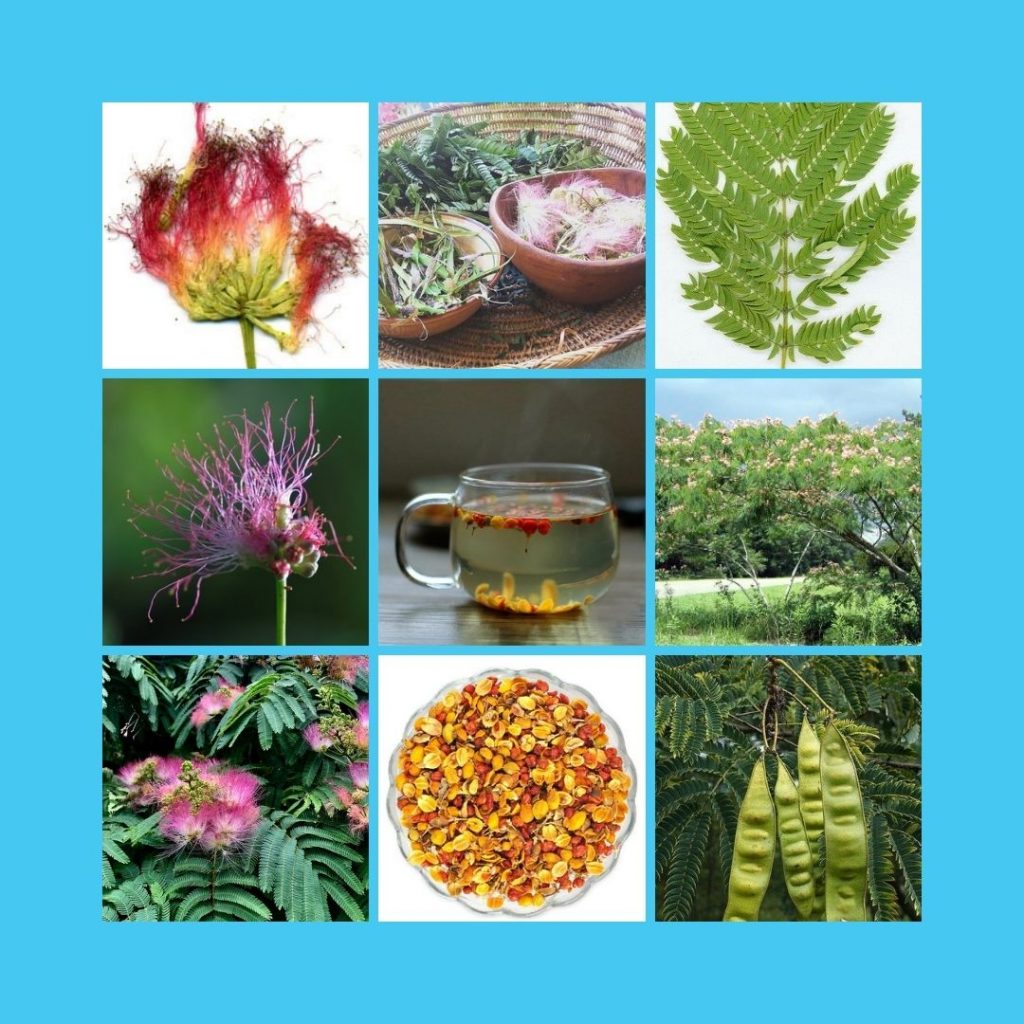
Often found Roadside the Mimosa tree or Albizia julibrissin, although beautiful, is an invasive plant that has been known to disrupt ecosystems43. Typically recognized by their bright pink flowers the Mimosa Tree’s ability to resprout quickly when cut back or removed from an effective area. Mimosa trees tend to grow in large clumps which take vital resources from native plants including sunlight, most importantly these trees often harbor Fusarian, a fungal disease that attacks native plants including the vegetables and palms native to the state of Florida.
The Mimosa Tree is also Known as Persian Silk Trees because of the way the flowers are structured6.
Foragers can utilize the tree in many ways. The leaves of the Mimosa tree have been known to be edible but the star of the Mimosa tree for many foragers are the beautiful flowers that can be eaten or made into a sweet syrup26.
2.Alternanthera philoxeroides: Alligator Weed

Alligator weed or Alternanthera philoxeroides Originally native to South America has become a plant that is invasive 32 different countries, according to Eco-Biology and Management of Alligator Weed “Alligatorweed is usually considered as one of the most significant threats to plant diversity” This crop is so invasive it has been known to reduce rice yields in some areas by up to 45%36. Alligatorweed can become such an incredibly invasive species not only through competing for resources but through a process called Allelopathy authors of an article titled “New directions for integrated weed management: Modern technologies, tools, and knowledge discovery” describe allelopathy as the “Allelopathy is the direct or indirect effects of chemicals produced by plants or microorganisms”23
A friend of survivalists, these weeds are known to have leaves and stems that are edible when cooked, the cooking process is meant to eliminate any toxins that the plant may absorb from its source of water.
3. Colocasia esculenta: Wild Taro, Dasheen
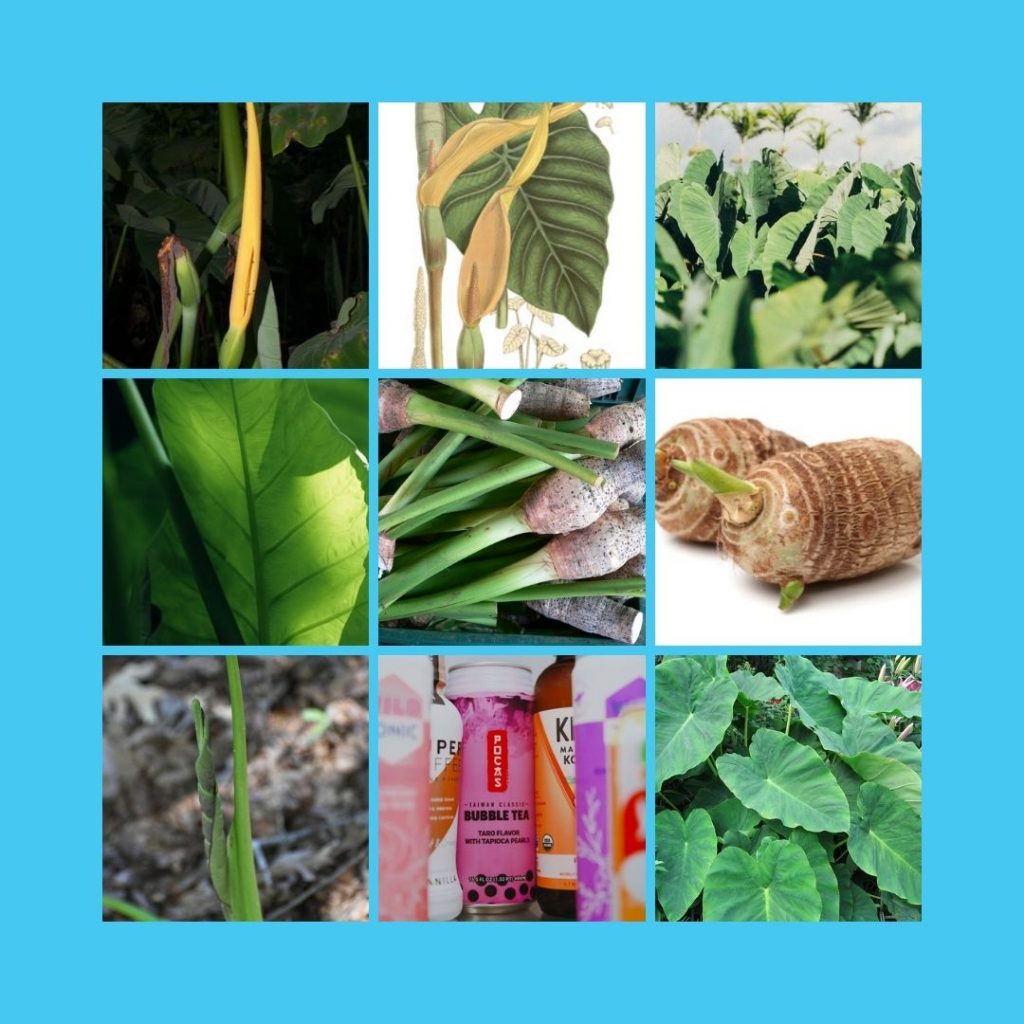
Wild Taro or Colocasia Esculenta is a particularly famous plant that is better known as the Elephant Ear plant look alike, this plant native to India and southeast Asia45. Colocasia Esculenta can be found around and along with many Florida bodies of water often utilizing their elephant ear leaves to out compete for native species for sunlight.
The plant is most widely known for its spherical corms or underground stems called taro39. Taro is consumed in many regions of the world and is often made into puddings and bread; the large leaves of the plant are often consumed as a stew. Much like other plants on this list, Taro should not be consumed raw due to the accumulated calcium oxalate which must be destroyed in the heating process34.
4. Ipomoea aquatica: Water Spinach

Water Spinach, contrary to its name, is not closely related to the spinach plant we commonly eat and is more closely related to sweet potatoes and Morning Glories37. Water spinach as a plant has become invasive due to its tendency to form dense floating mats on top of the water, these floating mats will prevent native submerged plants from receiving adequate sunlight and prevent various plant species from emerging out of the water11.
The Water Spinach, also known as the Swamp Morning Glory, has been known to have edible leaves and shoots which are often used in traditional Chinese cooking, where it is native to42.
5. Dioscorea alata: Winged Yam
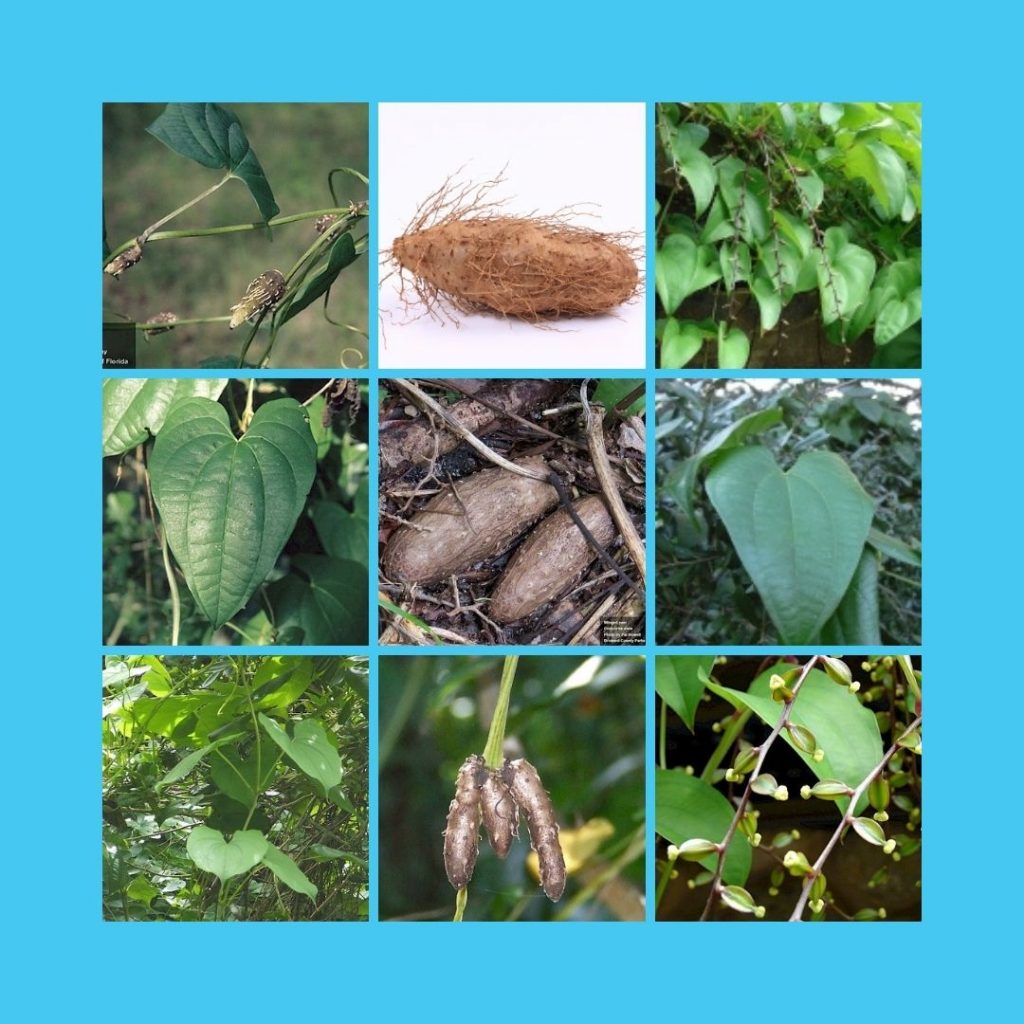
The Winged Yam, a member of the sweet potato family, has been able to create extensive vines of leaves that will aggressively cover trees and other plants in competition for space, nutrients, and sunlight47.
Winged Yams are an edible commodity in West Africa specifically for their edible tubers which resemble sweet potatoes38. Much like many of the plants related to the sweet potato, the edible tubes of the Winged Yam must be boiled extensively before consumption38.
6. Eichhornia crassipes: Water Hyacinth

The Water Hyacinth is an extremely invasive aquatic plant that has been known to be extremely harmful to ponds and lakes. Water hyacinths can become invasive due to their tendency to create dense mats on the water’s surface, these mats of Water hyacinths disrupt water flow and reduce water quality by preventing oxygen from entering the water48. In addition to the harm they can cause to lakes, Usha Vedagiri in their article on water hyacinths from the Environmental encyclopedia stated “Studies show that seeds that have been buried in mud for many years remain viable under the right conditions, leading to reinfestation of lakes long after chemical treatment.”53
Though this plant is highly invasive it is also highly edible, Clara Runner of the Orlando Sentinel describes the plant as “…excellent survival food, a natural way to obtain vitamins, fiber and other nutrients”31 The Water Hyacinths leaves and flowers are edible and can be eaten raw or cooked.
7. Pueraria montana: Kudzu
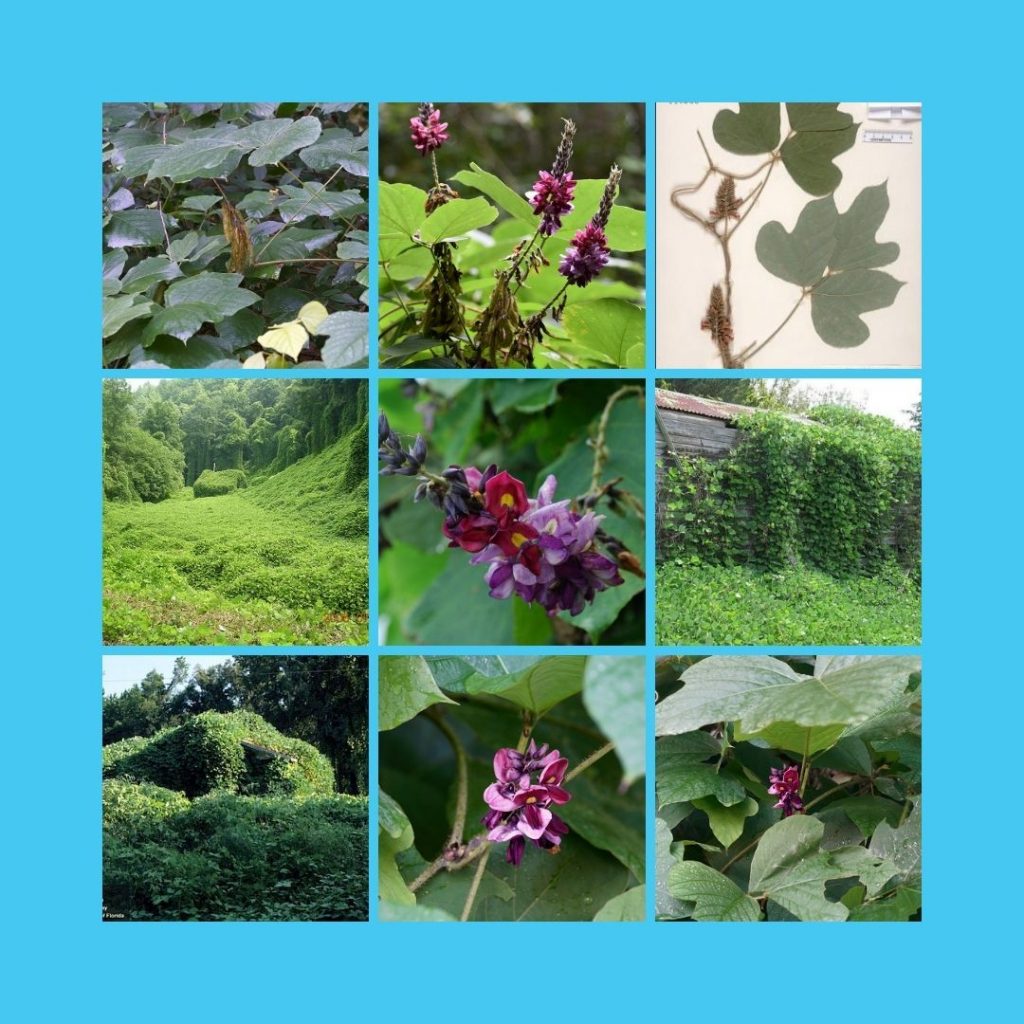
Kudzu is extremely famous in America for being extremely invasive, Richard Soloman refers to the plant as “The Vine that Ate the South” in their Slate article about the plant35. Although Kudzu is not as destructive in Florida as in other states the plant is still known to be invasive in over 40 counties in the state of Florida14. Kudzu is a particularly menacing plant because it can grow over and around anything in its path including other plants and even buildings. Kudzu is an extremely aggressive invasive species that can grow a foot every day once established, this fast-growing nature has led to the plant being known to completely uproot trees and shrubs.
In regions where the Kudzu plant is native, it has been known to be a great source of food having edible leaves, flowers, and shoots19. The Kudzu Flowers can be used for making syrups and candies, and the leaves can be used like spinach meaning they can be eaten raw or cooked. Lastly, the Kudzu plant has roots that resemble potato tubers, these roots can be used to make starch for frying food or thickening sauce20.
8. Eugenia uniflora: Surinam Cherry

The Surinam Cherry has some of the most recognizable fruit of any other plant on this list, the fruit of the surinam cherry is often a bright red or orange color and their pumpkin-shaped fruit.
Although extremely recognizable the Eugenia uniflora or the Surinam Cherry plant can create extremely dense thickets that displace native plant species28. The Surinam Cherry has become such an invasive species in Florida not only because of its growing patterns but also its reproduction patterns because the fruit is highly edible amongst birds and small mammals increasing the likeliness of seed dispersal49.
The Fruit of the Surinam Cherry is one of the only edible parts of the plant, the only rule when foraging should be to ensure the fruit is a deep red color to signify they are ripe and ready to eat28. Interestingly enough the fruit of this plant is particularly polarizing; foragers are often very hot or cold on the flavor of this particular fruit. One of the best ways to prepare this fruit is macerated like strawberries to bring out the sweet and distinct flavor.
9. Manilkara zapota: Sapodilla
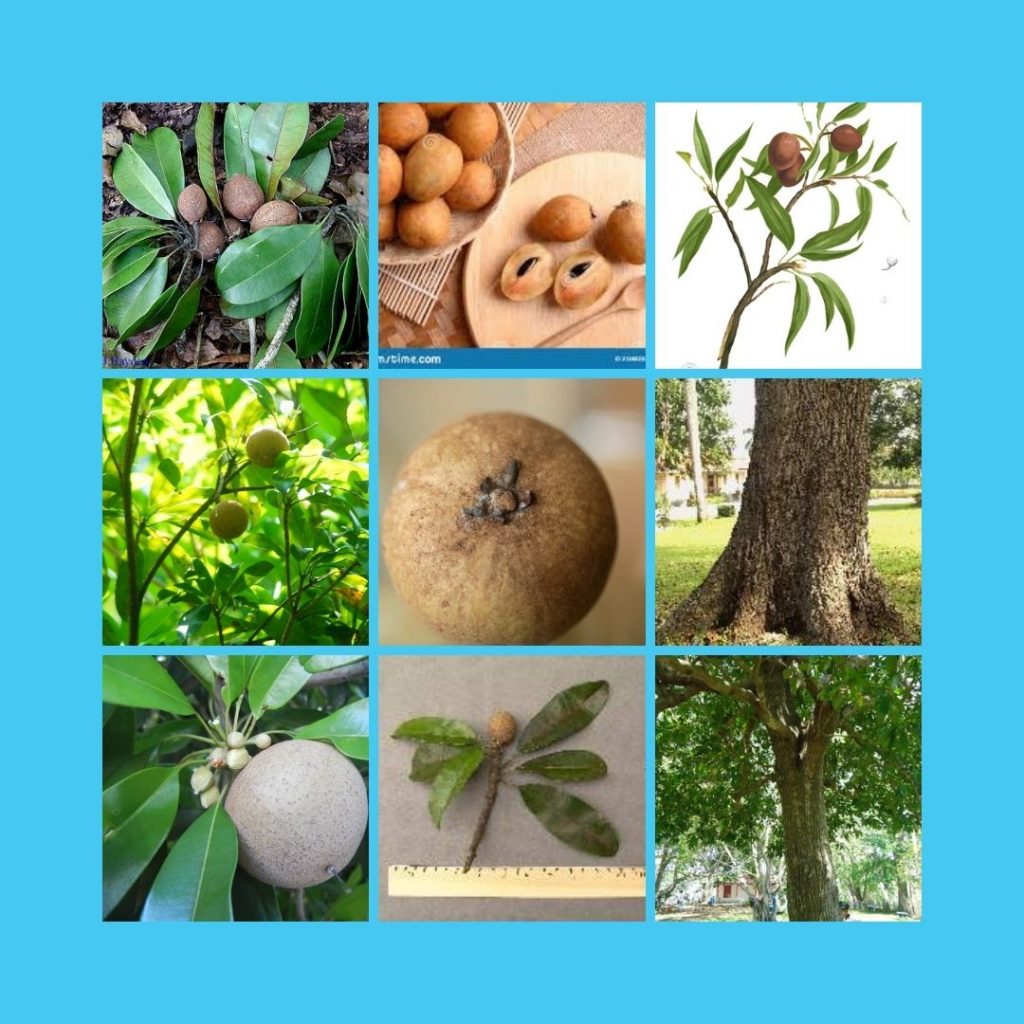
Native to Mexico and Central America the Sapodilla tree is an invasive species of tree that is particularly known for its fruiting abilities, the copious amounts of fruit introduced by the tree have been known to disrupt animal communities with the copious amount of viable fruit it produces altering entire animal communities51. In addition to overshading plant life, the amount of fruit produced has created increased competition when it comes to seed dispersal amongst nearby plant life.
Although the plant has very little commercial importance around the world, the plant is appreciated for its fresh fruit. The plant was once prized by the chewing gum industry and even used by the Aztecs as chewing gum4. The brown fruit can be described as sweet and compared to the combination of pears and brown sugar, the fruit is often eaten raw, but can be used as ice cream or sherbert as well4.
10. Pterois volitans: Lionfish:
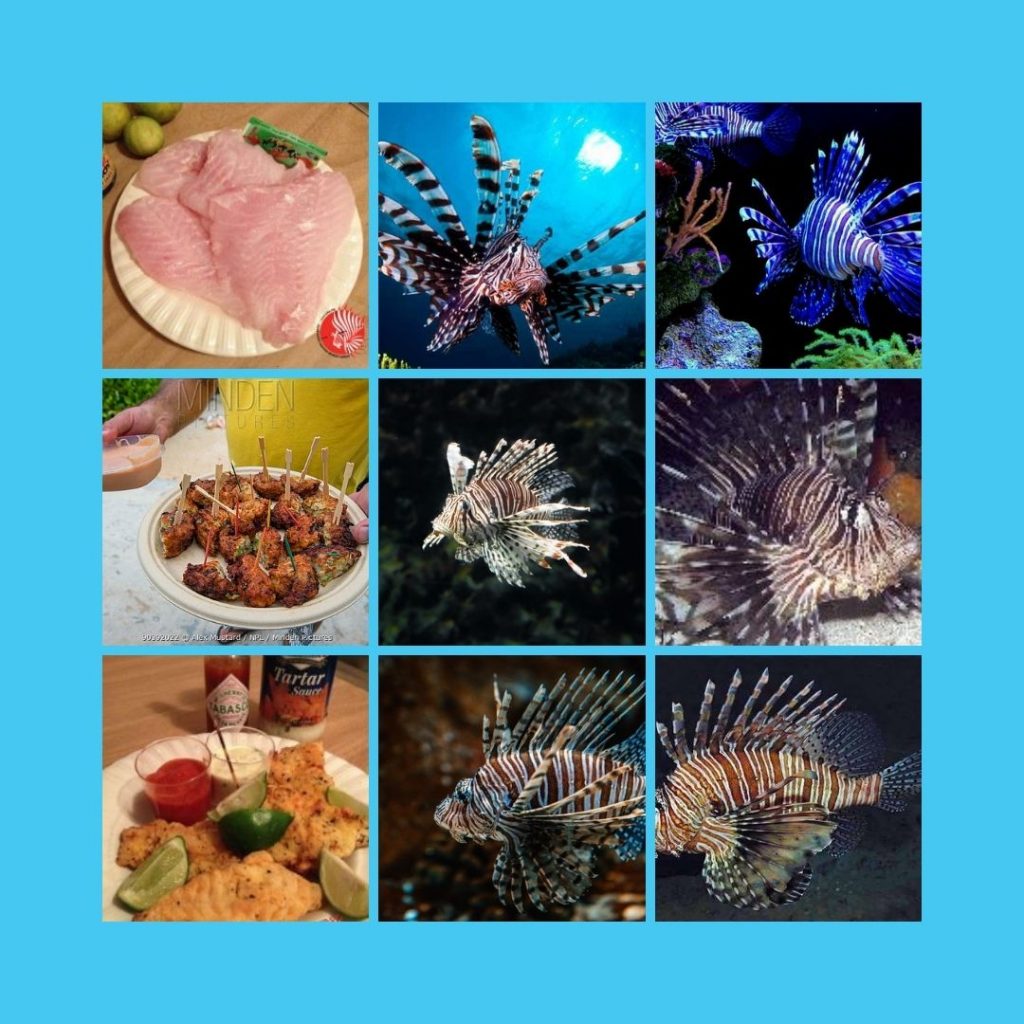
But eating invasive species is not exclusive to invasive plants, divers in Florida and many places in the world have participated in Lionfish Harvest challenges. Lionfish Harvest challenges like the ones that took place in this news article are designed to prevent the harmful invasive species from procreating24. Lionfish have been able to become an extremely invasive species, native to the Indo-Pacific and the Red Sea The Lionfish have been identified in masses as far north as North Carolina and as far south as South America year-round according to the Florida Fish and Wildlife Conservation Commission13. The FWC Commission goes to great lengths to express the danger in mishandling wild lionfish, even pointing out their 18 poisonous spines along the Lionfish’ entire body10.
Lionfish have become an incredibly destructive force when it comes to Florida ocean life and commercial fishing, to combat this many places in Florida hold spearfishing competitions to actively combat this constantly increasing species. These spearfishing competitions are so necessary since many Lionfish can release about 12,000 to 15,000 eggs every four days in warmer climates10.
To combat the problem the Florida Keys held a Lionfish Derby & Festival which allowed citizens to hunt Lionfish for sport and even provided a Lionfish taste testing. Just one-way citizens in Florida can actively combat the lionfish problem and also create community.
Verify You Are Not Introducing Invasive Species Into The Environment.
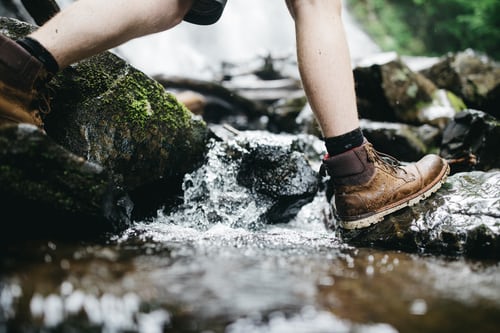
Many people who have indoor and outdoor plants love to bring unique and interesting plants into our homes and outdoor gardens, although these plants can be beautiful this is one-way invasive species can be introduced into the environment. Plants like the popular Mother of Thousands plant can make beautiful houseplants but can also be extremely invasive due to their willingness to grow anywhere and the fact the Mother of Thousands is a self-propagating plant.
Clean your boots before you hike in a new area to get rid of hitchhiking weed seeds and pathogens. Plants that use animals to disperse their seeds utilize a method called zoochory which is a method of seed dispersal that is reliant on animals eating or brushing past the plant. Hitchhiking seeds can be found on and in animals like cats, dogs, snakes, and even ants. Plants like Bur Marigold (Bidens cernua) and Broadleaf Enchanter’s Nightshade (Circaea Canadensis) have hooks and spikes on their seeds which attach to the fur of unsuspecting animals.
Dealing with invasive plants can seem like a rather daunting task but when everyone in the community remembers to be mindful of the plants that are being introduced to our native habitats we can begin to solve the problem with invasives one forager at a time.
References
- Ballogg, R. (2018, May 22). If you can’t beat ’em, eat ’em. Here are 5 invasive species Floridians are cooking up. Retrieved from Bradenton Herald: https://www.bradenton.com/living/food-drink/article210801569.html
- Chagaris, D., Binion-Rock, S., Bogdanoff, A., Dahl, K., Granneman, J., Harris, H., . . . Micheal, A. (2017, August 7). An Ecosystem-Based Approach to Evaluating Impacts and Management of Invasive Lionfish. Retrieved from American Fisheries Society: https://doi.org/10.1080/03632415.2017.1340273
- Cornelia. (2019, May 19). Kudzu, an Invasive Weed with Hidden Virtues. Retrieved from Eat The Planet: https://eattheplanet.org/kudzu-an-invasive-weed-with-hidden-virtues/
- Crane, J. H., Balerdi, C. F., & Maguire, I. (2020, January 6). SAPODILLA GROWING IN THE FLORIDA HOME LANDSCAPE. Retrieved from University of Florida, Institute of Food and Agricultural Sciences: https://edis.ifas.ufl.edu/publication/MG057
- Deane. (n.d.). Alligator Weed. Retrieved from Eat the Weeds: http://www.eattheweeds.com/alligator-weed/
- Deanne. (2021). Mimosa Silk Tree. Retrieved from Eat The Weeds: http://www.eattheweeds.com/albizia-julibrissin-tripinnated-lunch-2/#:~:text=Julibrissin%20is%20a%20corruption%20of,which%20means%20’flower%20of%20silk.&text=Usually%20very%20picturesque%2C%20it%20has,They%20are%20not%20edible
- Deanne. (2021). Surinam Cherry: Only Ripe Need Apply. Retrieved from Eat The Weeds: http://www.eattheweeds.com/surinam-cherry-only-ripe-need-apply/
- Edible South Florida. (2019, January 6). Sapodilla. Retrieved from Edible South Florida: https://ediblesouthflorida.ediblecommunities.com/guide/sapodilla
- Florida Exotic Pest Plant Council. (2019). Florida Exotic Pest Plant Council’s 2019 List of Invasive Plant Species. Retrieved from Florida Exotic Pest Plant Council: http://bugwoodcloud.org/CDN/fleppc/plantlists/2019/2019_Plant_List_ABSOLUTE_FINAL.pdf
- Florida Fish and Wildlife Commission. (2021). Lionfish – Pterois volitans. Retrieved from Florida Fish and Wildlife Commission: https://myfwc.com/wildlifehabitats/nonnatives/marine-fish/scorpionfish-and-lionfish/lionfish/
- Florida Fish and Wildlife Commission. (2021). Water Spinach. Retrieved from Florida Fish and Wildlife Commission: https://myfwc.com/wildlifehabitats/habitat/invasive-plants/weed-alerts/water-spinach/
- Florida Fish and Wildlife Conservation Commission. (2020, June 02). Compete in the 2020 Lionfish Challenge. Retrieved from Florida Fish and Wildlife Conservation Commission: https://myfwc.com/news/all-news/lionfish-620/
- Florida Fish and Wildlife Coservation Commission. (2021). Lionfish. Retrieved from Florida Fish and Wildlife Coservation Commission: https://myfwc.com/fishing/saltwater/recreational/lionfish/
- Florida Museum. (2021, February 22). Five Facts: Kudzu in Florida. Retrieved from Florida Museum: https://www.floridamuseum.ufl.edu/science/five-facts-kudzu-in-florida/
- Forrsk. (2021). Ipomoea aquatica. Retrieved from Plants For A Future: https://pfaf.org/user/Plant.aspx?LatinName=Ipomoea+aquatica
- Gilman, E. F. (2015, May 26). EUGENIA UNIFLORA SURINAM CHERRY. Retrieved from University of Florida, Institute of Food and Agricultural Sciences: https://edis.ifas.ufl.edu/publication/FP202
- Global Invasive Species Database. (2006, April 21). Eugenia uniflora. Retrieved from Global Invasive Species Database: http://www.iucngisd.org/gisd/species.php?sc=983
- Green Global Travel. (n.d.). INVASIVE SPECIES LIST: 10 DESTRUCTIVE SPECIES YOU CAN EAT. Retrieved from Green Global Travel: https://greenglobaltravel.com/edible-invasive-species-list/
- Hassiotis, C. (2018, August 1). Kudzu is edible. Why aren’t we eating it? Retrieved from The Atlanta Journal-Constitution: https://www.ajc.com/entertainment/dining/kudzu-edible-why-aren-eating/BXAct9CtIshpWaB8f9D2PO/
- Hill, K. (2009, August 11). Did You Know You Can Eat Kudzu. Retrieved from The Kitchn: https://www.thekitchn.com/did-you-know-you-can-eat-kudzu-92488
- INaturalist. (2021). Surinam Cherry. Retrieved from INaturalist: https://inaturalist.ca/taxa/83642-Eugenia-uniflora
- Invasive Plant Atlas of the United States. (2018, October). Mimosa. Retrieved from Invasive Plant Atlas of the United States: https://www.invasiveplantatlas.org/subject.html?sub=3004
- Korres, N. E., Burgos, N. R., Travlos, I., Vurro, M., Gitsopoulos, T. K., Varanasi, V. K., . . . Salas-Perez, R. (2019, March 6). Chapter Six – New directions for integrated weed management: Modern technologies, tools and knowledge discovery. Retrieved from Science Direct: https://doi.org/10.1016/bs.agron.2019.01.006
- Marshall, S. (2021, October 5). Spearfishing Team Removes Record 564 Invasive Lionfish During 2-Day Derby. Retrieved from Field and Stream: https://www.fieldandstream.com/conservation/spearfishing-team-catches-massive-lionfish-haul/
- Morton, J. F. (1987). Surinam Cherry. Retrieved from Purdue University: Center for New Crops & Plant Products: https://www.hort.purdue.edu/newcrop/morton/surinam_cherry.html
- National Invasive Species Information Center. (2021). Water Hyacinth. Retrieved from National Invasive Species Information Center: https://www.invasivespeciesinfo.gov/aquatic/plants/water-hyacinth
- Nikole, A. (2020, August 21). Mimosa Tree. Retrieved from TikTok: https://vm.tiktok.com/TTPdYxQHQq/
- Pasiecznik, N. (2014, January 28). Eugenia uniflora. Retrieved from Cabi: Invasive Species Compendium: https://www.cabi.org/isc/datasheet/23099#tosummaryOfInvasiveness
- Petruzzello, M. (2020, November 4). Eugenia. Retrieved from Britannica: https://www.britannica.com/plant/Eugenia
- Rafferty, J. P. (2021, July 14). Invasive Species. Retrieved from Britannica: https://www.britannica.com/plant/Surinam-cherry
- Renner, C. (1985, September 19). WATER NUISANCE MAKES A TASTY, NUTRITIOUS SALAD. Retrieved from Orlndo Sentinel: https://www.orlandosentinel.com/news/os-xpm-1985-09-19-0330110222-story.html
- Royen, P. (2021). Manilkara zapota. Retrieved from Plants For A Future: https://pfaf.org/user/Plant.aspx?LatinName=Manilkara+zapota
- Sateesh, S., Mvv, P., & Kiran, B. R. (2017, October). Health risks of leafy vegetable Alternanthera philoxeroides (Alligator weed) rich in phytochemicals and minerals. Retrieved from Research Gate: https://www.researchgate.net/publication/320727913_Health_risks_of_leafy_vegetable_Alternanthera_philoxeroides_Alligator_weed_rich_in_phytochemicals_and_minerals
- Schott, L. (n.d.). Colocasia esculenta. Retrieved from Plants For A Future: https://pfaf.org/user/Plant.aspx?LatinName=Colocasia+esculenta
- Soloman, R. (2021, August 28). Kudzu Is So Much More Than the “Vine That Ate the South”. Retrieved from Slate: https://slate.com/news-and-politics/2021/08/kudzu-south-japan-metaphor.html
- Tanveer, A., Ali, H. H., Manalil, S., Raza, A., & Chauhan, B. S. (2018, August 6). Eco-Biology and Management of Alligator Weed. Retrieved from Springer Link: https://link.springer.com/article/10.1007/s13157-018-1062-1
- The Editors of Encyclopaedia Britannica. (2019, February 06). Ipomoea. Retrieved from Britannica: https://www.britannica.com/plant/Ipomoea
- The Editors of Encyclopaedia Britannica. (2020, November 25). winged yam. Retrieved from Britannica: https://www.britannica.com/plant/white-yam
- The Editors of Encyclopaedia Britannica. (2021, August 11). Taro . Retrieved from Britannica: https://www.britannica.com/plant/taro-plant#:~:text=taro%2C%20(Colocasia%20esculenta)%2C,and%20became%20a%20staple%20crop.&text=The%20large%20leaves%20of%20the,Taro%20roots
- The Fruit Guys. (2011, April 21). Sapodilla fruit. Retrieved from The Fruit Guys: https://fruitguys.com/2011/04/sapodilla-fruit/
- The Woks of Life Staff. (2020, 12 12). WATER SPINACH: WHAT IT IS & HOW TO COOK IT. Retrieved from The Woks of Life: a Culinary Genealogy: https://thewoksoflife.com/chinese-water-spinach/#:~:text=Water%20spinach%20is%20a%20long,in%20water%20or%20damp%20soil.&text=Other%20English%20names%20for%20it,Asia%2C%20where%20it%20is%20native
- United States Department of Agriculture. (2021). Invasive Plants. Retrieved from U.S Forest Service: https://www.fs.fed.us/wildflowers/invasives/
- University of Florida / IFAS / Center for Aquatic & Invasive Plants. (2021, November 4). Albizia julibrissin; Mimosa tree. Retrieved from University of Florida / IFAS / Center for Aquatic & Invasive Plants: https://plants.ifas.ufl.edu/plant-directory/albizia-julibrissin/
- University of Florida / IFAS / Center for Aquatic & Invasive Plants. (2021, November 4). Alternanthera philoxeroides; Alligatorweed. Retrieved from University of Florida / IFAS / Center for Aquatic & Invasive Plants: https://plants.ifas.ufl.edu/plant-directory/alternanthera-philoxeroides/
- University of Florida / IFAS / Center for Aquatic & Invasive Plants. (2021, November 4). Colocasia esculenta. Retrieved from Center For Aquatic and Invasive Plants: https://plants.ifas.ufl.edu/plant-directory/colocasia-esculenta/
- University of Florida / IFAS / Center for Aquatic & Invasive Plants. (2021). Colocasia esculenta. Retrieved from Assessment of Non-Native Plantsin Florida’s Natural Areas: https://assessment.ifas.ufl.edu/assessments/colocasia-esculenta/
- University of Florida / IFAS / Center for Aquatic & Invasive Plants. (2021, November 4). Dioscorea alata. Retrieved from University of Florida / IFAS / Center for Aquatic & Invasive Plants: https://plants.ifas.ufl.edu/plant-directory/dioscorea-alata/
- University of Florida / IFAS / Center for Aquatic & Invasive Plants. (2021, November 4). Eichhornia crassipes. Retrieved from University of Florida / IFAS / Center for Aquatic & Invasive Plants: https://plants.ifas.ufl.edu/plant-directory/eichhornia-crassipes/
- University of Florida / IFAS / Center for Aquatic & Invasive Plants. (2021, November 4). Eugenia uniflora. Retrieved from University of Florida / IFAS / Center for Aquatic & Invasive Plants: https://plants.ifas.ufl.edu/plant-directory/eugenia-uniflora/
- University of Florida / IFAS / Center for Aquatic & Invasive Plants. (2021, November 04). Ipomoea aquatica. Retrieved from University of Florida / IFAS / Center for Aquatic & Invasive Plants: https://plants.ifas.ufl.edu/plant-directory/ipomoea-aquatica/
- University of Florida / IFAS / Center for Aquatic & Invasive Plants. (2021, November 4). Manilkara zapota. Retrieved from University of Florida / IFAS / Center for Aquatic & Invasive Plants: https://plants.ifas.ufl.edu/plant-directory/manilkara-zapota/#:~:text=The%20huge%20sapodilla%20tree%20provides,is%20native%20to%20Central%20America
- University of Florida / IFAS / Center for Aquatic & Invasive Plants. (2021, November 4). Pueraria montana. Retrieved from University of Florida / IFAS / Center for Aquatic & Invasive Plants: https://plants.ifas.ufl.edu/plant-directory/pueraria-montana/
- Vedagiri, U. (2011). Water Hyacinth. In Environmental Encyclopedia: 4th ed., vol. 2 (pp. 1730-1731). Gale Ebooks. Retrieved from https://go.gale.com/ps/bobIndex.do?indexTerm=W&tabID=&bobIndexId=&actionString=doBrowseIndex&searchId=¤tPosition=&docId=GALE%7C3VCR&userGroupName=orla57816&inPS=true&contentSegment=9781414487397&source=&prodId=GVRL&isDownLoadOptionDisabled=true








